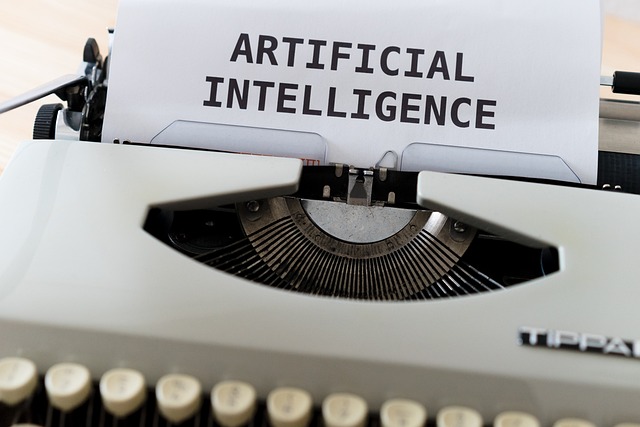What Is Agentic AI?
Agentic AI represents a significant leap forward in artificial intelligence—moving beyond passive tools that wait for user input, into the realm of autonomous agents capable of setting goals, making decisions, and executing tasks with minimal human intervention. Unlike traditional AI systems that respond to prompts, agentic AI exhibits goal-directed behavior, maintains a form of situational awareness, and continuously adapts its actions to achieve complex objectives.
Think of it not as a smarter assistant, but as a digital collaborator—able to manage entire workflows, delegate subtasks, interact with APIs or software environments, and even evaluate its own performance to improve over time.
How Can Agentic AI Be Used?
Agentic AI is not a single technology—it’s a framework combining several capabilities:
- Autonomy – Operating independently, making decisions in dynamic environments.
- Goal Orientation – Understanding objectives and sub-objectives.
- Multi-Step Reasoning – Executing and adapting plans over extended tasks.
- Interaction – Communicating with systems, humans, and other agents.
Key Use Cases Today:
- Software Development & IT Automation:
- AI agents like GitHub Copilot or Devin (from Cognition AI) can write, test, debug, and deploy code.
- Agents autonomously manage cloud infrastructure, diagnose errors, and optimize system performance.
- Customer Support & Operations:
- AI agents run entire helpdesk workflows—responding to tickets, escalating issues, and learning from interactions.
- In enterprise operations, agentic systems handle procurement, invoicing, and compliance monitoring.
- Personal Productivity Agents:
- Tools like AutoGPT or AgentGPT can be assigned tasks like “research best CRM platforms” and autonomously browse, summarize, and report findings.
- Scheduling meetings, booking travel, and managing email communications.
Futuristic Role in Sustainability
Agentic AI holds transformative potential in sustainability, particularly in areas that require complex decision-making across large systems:
1. Energy Optimization:
- Autonomous agents can monitor and adjust power consumption in real-time across smart grids, optimizing usage based on cost, demand, and environmental impact.
2. Climate Modeling and Adaptation:
- AI agents can synthesize vast climate datasets, simulate scenarios, and propose mitigation strategies, aiding researchers and policymakers.
3. Sustainable Agriculture:
- In precision farming, agents could analyze soil data, predict weather patterns, and autonomously control irrigation and fertilization to minimize waste and emissions.
4. Waste Management and Circular Economy:
- Agentic AI could autonomously track product life cycles, suggest reuse strategies, or direct logistics for recycling processes—bringing automation to sustainable supply chains.
Future in the IT Industry
Agentic AI is expected to revolutionize the IT industry by becoming an integral part of how software and systems are built, maintained, and optimized:
Key Transformations Ahead:
- DevOps Agents: End-to-end software lifecycle management with autonomous code reviews, patching, scaling, and deployment.
- Security Agents: AI agents constantly monitoring for vulnerabilities, launching simulated attacks (red teaming), and applying fixes autonomously.
- AI for AI: Agents building, testing, and improving other AI models—accelerating innovation cycles.
By offloading routine and complex tasks, agentic AI will not just increase productivity but redefine roles in IT—freeing human talent for strategic design, ethics, and oversight.
The emergence of agentic AI marks a paradigm shift: from smart assistants to autonomous collaborators. Its rise is not just about convenience—it’s about amplifying human capability to solve some of the world’s most pressing problems, especially in sustainability and technology.
As agentic AI matures, it will blur the lines between human and machine agency—challenging us not only to harness its potential but to do so responsibly, ethically, and inclusively.
Agentic AI System Architecture, illustrating how various components collaborate to enable autonomous decision-making and task execution:
Key Components Explained:
1. Perception Layer
Function: Gathers data from the environment through sensors, APIs, and user inputs.
Example: Collecting real-time data from IoT devices or user interactions.
Source: inoru.com
2. Reasoning Layer
Function: Processes the gathered data using AI models to make informed decisions.
Example: Utilizing large language models (LLMs) to analyze and interpret data.
Source: arionresearch.com
3. Action Layer
Function: Executes decisions by interacting with external systems or performing tasks.
Example: Automating processes like sending emails, updating databases, or controlling devices.
Source: rapidinnovation.io
4. Memory & Knowledge Base
Function: Stores historical data, learned experiences, and domain-specific knowledge.
Example: Maintaining a knowledge graph or vector database for context-aware decision-making.
Source: geeksforgeeks.org
5. Feedback & Adaptation Loop
Function: Monitors outcomes and refines strategies based on performance.
Example: Implementing reinforcement learning to improve task execution over time.
Source: engati.com
6. Orchestrator & Workflow Manager
Function: Coordinates tasks among multiple agents and manages complex workflows.
Example: Using tools like LangGraph or CrewAI to design and oversee agent interactions.
Source: ashlingpartners.com
This architecture enables Agentic AI systems to operate autonomously, adapt to changing environments, and perform complex tasks efficiently.
Use Case: Agentic AI in E-Commerce Customer Support
Scenario:
A large e-commerce company struggles with handling thousands of customer inquiries daily—ranging from product questions and order tracking to refund requests and account issues. Traditional chatbot systems were reactive and limited to scripted flows, often escalating issues to human agents.
Agentic AI Solution: “Smart Support Agent”
1. Goal Definition
The agent is given a broad objective:
➡️ “Resolve customer inquiries autonomously with minimal human intervention, ensuring satisfaction scores above 90%.”
2. Perception & Input Handling
- Agent connects to live chat, email inbox, and voice call transcripts.
- It uses NLP to understand intent, sentiment, urgency, and extract key entities (e.g., order numbers, complaint type).
✅ Customer Input:
“I ordered a blender last week and it’s not arrived yet. Can you check?”
3. Autonomous Action Planning
The agent:
- Authenticates the user via API to the CRM.
- Retrieves order data via the e-commerce platform API.
- Detects delivery delay from logistics API.
- Determines next-best action (e.g., offer ETA, refund, or re-shipment).
🧠 Internal Plan:
- Validate user
- Fetch order
- Detect delay
- Offer options
- Confirm with customer
- Execute resolution
- Log outcome
4. Decision Execution
The agent replies:
“I’ve found your order—it was delayed due to a warehouse issue. It’s now scheduled for delivery in 2 days. Would you prefer to wait or receive a full refund?”
Customer selects refund. The agent:
- Initiates the refund through the billing system.
- Sends confirmation email.
- Updates the ticket in the helpdesk system.
- Tags the issue for pattern tracking (e.g., warehouse delays).
5. Feedback & Learning Loop
- Monitors the customer’s final survey rating.
- If satisfaction is below 4 stars, it analyzes failure points and adjusts future dialogue.
- Shares patterns with the logistics team for operational improvement.
Business Impact
| Metric | Before Agentic AI | After Agentic AI |
|---|---|---|
| First Response Time | 5–15 minutes | < 5 seconds |
| Resolution Time | 12 hours avg | < 10 minutes |
| CSAT (Satisfaction) | 83% | 94% |
| Human Escalation Rate | 60% | < 15% |
Why This Matters
Agentic AI doesn’t just automate—it thinks, plans, and learns. It acts like a customer service manager: resolving issues, understanding context, and continuously improving.
This use case shows how Agentic AI scales empathy and intelligence, freeing up human agents to handle complex, emotionally nuanced conversations while machines handle the bulk of routine work.




